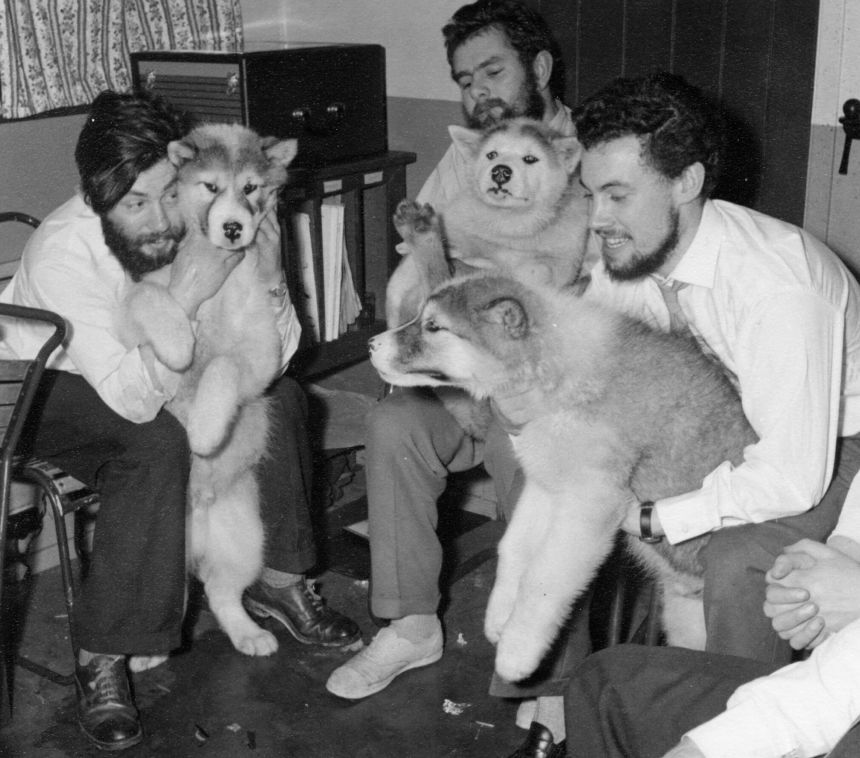
According to the British Antarctic Survey (BAS), the bones of a British researcher who fell into a crevasse on an Antarctic glacier 66 years ago have been found.
Dennis Bell, then 25, vanished into the ice on July 26, 1959 while climbing the Ecology glacier on King George Island, one of the South Shetland Islands that lie north of the Antarctic Peninsula. He survived the initial fall – estimated to have been 100 feet – but an attempt to rescue him failed, and he wasn’t seen again.
According to the BAS, a team from the Polish base on King George Island discovered his remains and hundreds of personal belongings among boulders that had been exposed when the glacier receded in January.
During a five-day archeological search in February, the Polish team found bone fragments and man-made items, such as a Swedish knife, radio equipment, ski poles, and a watch with an engraved inscription.
David Bell and Valerie Kelly, Bell’s surviving siblings, were shocked to learn that their DNA tests matched.
David Bell told BAS, “My sister Valerie and I were shocked and amazed when we were informed that our brother Dennis had been found after 66 years.” He said the discovery had assisted the family in “coming to terms with the tragic loss of our brilliant brother” and thanked the Polish and British team for “bringing him home.”
After a career with the Royal Air Force, Bell, who went by the moniker “Tink,” joined the Falkland Islands Dependencies Survey (FIDS), the forerunner of the BAS, as a meteorologist in 1958 in search of greater adventure.
BAS director Dame Jane Francis described the discovery as a “poignant and profound moment” that “brings closure to a decades-long mystery and reminds us of the human stories embedded in the history of Antarctic science.”
With just six men, Bell was assigned to a small British base at Admiralty Bay on King George Island, where the sea ice covers the area for nine months of the year.
On July 26, 1959, Bell and three other men set out on dog sledges to climb the glacier on the island’s peak to carry out survey and geological work, with Bell and surveyor Jeff Stokes departing about 30 minutes before the other group.
Bell, who was not wearing his skis, walked ahead to encourage the dogs because it was deep in the snow and they were starting to exhibit indications of exhaustion. Abruptly, he vanished into the ice.
According to an account by former BAS Director Sir Vivian Fuchs in Antony Nelson’s book “Of Ice and Men,” Stokes yelled into a hole in the ice and was “greatly relieved” to hear Bell respond.
Stokes then lowered a rope almost 100 feet into the hole, told Bell to tie himself onto it, and attached it to the dog sled, in an ill-fated attempt to lift him out, recounted Fuchs.
Perhaps as a result of the angle at which he lay in the fissure, Bell had wrapped the rope through his belt rather than around his torso. Fuchs stated, “As he got to the top, his body pressed against the lip, the belt broke, and he went down again.”
After that, Bell never returned his friends’ calls.
After leaving markings at the location, Stokes began descending the glacier in search of the other group of soldiers. When they finally returned to the scene after 12 hours in worsening weather, they concluded that there was no chance of saving him.
“Dennis was one of the many brave FIDS personnel who contributed to the early science and exploration of Antarctica under extraordinarily harsh conditions,” said Francis, the BAS Director.
“His Memory endured among colleagues and in the legacy of polar research, despite his passing in 1959.”
His remains were found by the Polish team and then taken to the Falkland Islands aboard the Sir David Attenborough, a BAS Research Ship. From there, they were given to the British Antarctic Territory Coroner and shipped to London.
For breaking news and live news updates, like us on Facebook or follow us on Twitter and Instagram. Read more on Latest World on thefoxdaily.com.
COMMENTS 0